#WritingImprovement
Explore tagged Tumblr posts
Text
Jade Malay Shares Simple and Effective Tips to Be a Better Writer

Jade Malay shares that writing is not just a skill but a habit that can be shaped with patience, clarity, and practice. For many aspiring writers, the journey may feel overwhelming, but with the right direction and daily effort, growth becomes natural. In this microblog, Jade Malay brings together some of the most practical and easy-to-follow writing tips that can help anyone become a better writer. These suggestions are shared in a simple and easy-to-read way to make sure the path of writing becomes clear and enjoyable.
Start by Reading More Every Day
The first and most important habit every writer must develop is reading. Jade Malay believes that great writing begins with great reading. Books, articles, blogs, and even newspapers all contribute to building your understanding of language. Reading allows you to see how thoughts are connected and how stories are formed. It helps you explore different writing styles and teaches you how to communicate your ideas effectively.
Reading also expands your vocabulary naturally and improves your grammar and sentence structure. It inspires you to think more creatively and opens your mind to various perspectives. The more you read, the more confident you become when it is time to write.
Make Writing a Daily Practice
Writing is just like any other skill. The more you practice, the more fluent and natural it becomes. Jade Malay recommends writing every day, even if it is just for a few minutes. You do not need to start with long essays. Just putting your thoughts down, whether it is through journaling or short paragraphs, will help build consistency.
Daily writing sharpens your thought process. It trains your mind to think clearly and express ideas with ease. Over time, it becomes easier to write with flow and clarity. You will also notice fewer blocks or hesitation when you face a blank page.
Write in a Clear and Simple Style
A common mistake many new writers make is using complicated words and long sentences to sound smart. Jade Malay emphasizes that the best writing is always simple and clear. Your goal as a writer should be to help your reader understand your message without confusion.
Writing in a simple style means using everyday language and short sentences. It means avoiding jargon and focusing on clarity. When you write clearly, you respect your reader’s time and attention. Your message becomes stronger and more impactful.
Do Not Edit While Writing
One important tip Jade Malay offers is to separate the writing and editing stages. When you are writing your first draft, allow your ideas to flow freely. Do not stop to fix grammar or spelling. Just write what you want to say. Once the writing is done, take a short break and then come back to edit with a fresh mind.
Editing allows you to refine your content. This is where you improve sentence structure, remove unnecessary words, and ensure your ideas are expressed in the best way. It is during editing that your writing becomes polished and professional.
Find and Develop Your Own Voice
Your voice is what makes your writing unique. Jade Malay encourages writers to avoid copying others and instead focus on finding their own style. Your voice reflects your personality, your tone, and the way you see the world. It comes from writing honestly and confidently.
To develop your voice, start by writing like you speak. Be real, be honest, and be yourself. Over time, your voice will become more natural and consistent. Readers are drawn to writing that feels authentic and personal.
Always Know Who You Are Writing For
Understanding your audience is one of the most important parts of writing. Before you begin, take a moment to think about who will be reading your content. Are you writing for students, professionals, or casual readers? What do they want to learn or understand from your writing?
When you know your audience, you can choose the right tone, the right words, and the right approach. Jade Malay explains that writing becomes more powerful when it is written with the reader in mind. It creates connection and delivers value.
Structure Your Content for Easy Reading
Well-organized writing is easier to read and more enjoyable. Jade Malay highlights the importance of using proper structure in all forms of writing. Start with a clear introduction that shares what the piece is about. Follow it with sections that explore each idea. End with a closing that brings everything together.
Use headings to guide the reader through your content. Short paragraphs keep the flow smooth. A clean structure helps the reader stay engaged and understand the message better. When writing is organized, it feels more professional and thoughtful.
Be Open to Feedback and Learn From It
Every writer needs feedback to grow. Sharing your work with others and accepting their suggestions is a part of the writing journey. Jade Malay believes that feedback is a gift. It helps you see what you missed and pushes you to do better next time.
Sometimes feedback may feel hard to hear, especially if it points out flaws. But it is important to stay open-minded. Use it as a learning tool. Over time, your writing will improve, and you will build confidence.
Never Stop Learning and Improving
Writing is a skill that continues to grow throughout your life. Jade Malay encourages writers to keep learning, no matter how experienced they are. Read writing guides, take online courses, listen to podcasts, and join writing communities. Every bit of learning adds something to your skillset.
Even reading other writers' blogs or watching videos about writing techniques can spark new ideas. The world of writing is big and full of possibilities. When you commit to learning, your writing becomes richer and more effective.
Stay Motivated and Keep Going
There will be days when writing feels difficult. You may feel stuck or uninspired. Jade Malay reminds us that this happens to every writer. What matters is that you keep going. Even writing a few lines on a tough day is better than writing nothing at all.
To stay motivated, set small writing goals. Celebrate your progress, no matter how small. Surround yourself with writing inspiration through books, quotes, or fellow writers. The more you write, the more natural it becomes, and the easier it is to stay motivated.
Conclusion
Jade Malay believes that anyone can become a better writer with the right mindset and habits. Writing is not about being perfect. It is about being honest, consistent, and clear. By reading more, writing daily, keeping your words simple, and always aiming to learn, you will see real progress in your writing journey.
Use these simple and effective tips from Jade Malay to guide your path as a writer. Stay committed, stay open to learning, and enjoy the creative process. Writing is your voice in the world. Make it count with clarity and passion.
0 notes
Text
Calligraphy Practice Exercises: Hone Your Skills
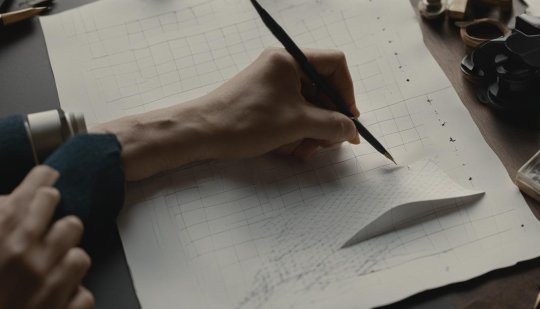
Calligraphy Practice Exercises: Essential Drills for Improving Your Lettering
Calligraphy is a beautiful art form that requires practice and patience to master. In this section, we will explore various calligraphy practice exercises that can help you improve your pen control, perfect your flourishes, and elevate your overall calligraphy skills. These exercises have been recommended by professional calligraphy artists and have proven to be effective in honing your calligraphy skills. Key Takeaways: - Regular practice is essential for improving your calligraphy skills. - Calligraphy practice sheets and worksheets provide structured exercises for honing your skills. - Start with basic exercises and gradually progress to more advanced drills to challenge yourself. - Choose the right practice sheets that suit your needs in terms of size, slant, and paper type. - Utilize free calligraphy practice sheets and worksheets available online to enhance your skills.
The Importance of Practice in Calligraphy
Practice is essential for improving any skill, and calligraphy is no exception. By regularly practicing calligraphy exercises, such as pen control drills and flourishes, you can develop muscle memory, improve your hand-lettering technique, and enhance your overall calligraphy skills. These practice exercises are designed to help you gain control over your pen strokes, refine your letterforms, and cultivate a unique calligraphy style. Through consistent practice, you can improve your calligraphy skills and create stunning hand-lettered pieces. When you practice calligraphy, you give yourself the opportunity to experiment with different techniques and styles. It allows you to explore various letterforms, strokes, and flourishes to find what resonates with you. By dedicating time to practice, you can refine your skills and develop your own unique artistic voice. Remember that calligraphy is a journey, and improvement takes time. Embrace the process and be patient with yourself. Set aside regular practice sessions, even if it's just a few minutes each day. Consistency is key in building muscle memory and improving your pen control. "The expert in anything was once a beginner." - Helen Hayes The Benefits of Regular Calligraphy Practice Regular calligraphy practice offers several benefits that contribute to the improvement of your skills. Firstly, it helps to develop muscle memory, allowing your hand to move fluidly and effortlessly as you create strokes and letterforms. With practice, your hand becomes more familiar with the movements required for calligraphy, resulting in smoother and more consistent penmanship. Secondly, regular practice allows you to experiment and explore your creativity. As you try new techniques and styles, you expand your repertoire and develop your own unique calligraphy style. Practice sessions provide an opportunity for self-expression and growth as an artist. Lastly, practice helps to build confidence. The more you practice, the more comfortable you become with the tools and techniques of calligraphy. This confidence shines through in your work, allowing you to create beautiful and impactful pieces. How to Incorporate Practice into Your Routine To make the most of your calligraphy practice, it's important to establish a routine that works for you. Consider setting aside dedicated time each day or week for practice. Treat it as a non-negotiable appointment with yourself, just like any other commitment. Create a comfortable and inspiring workspace where you can fully immerse yourself in your practice. Surround yourself with tools, materials, and inspiration that motivate and excite you. Whether it's a designated corner of your home or a portable practice kit, make sure it's a space that sparks your creativity. Additionally, consider joining a calligraphy community or finding a practice partner. Connecting with others who share your passion for calligraphy can provide valuable feedback, inspiration, and accountability. Whether online or in-person, these communities offer a supportive environment for growth and learning.
Calligraphy Practice Sheets and Worksheets
Calligraphy practice sheets and worksheets are valuable resources for honing your calligraphy skills. These structured exercises provide guided lines, stroke sequences, and lettering drills that allow you to practice specific techniques and styles. Whether you're a beginner or an experienced calligrapher, using calligraphy practice sheets can help you refine your strokes, improve your letterforms, and enhance your overall calligraphy skills. There are various types of calligraphy practice sheets available to suit different preferences and areas of focus. Traditional calligraphy practice sheets are designed to help you master classic scripts like Copperplate or Spencerian. Modern calligraphy practice sheets cater to those interested in contemporary lettering styles. Brush lettering practice sheets focus on developing skills specific to using brush pens, while digital calligraphy practice sheets offer exercises for creating calligraphy on digital platforms like the Procreate App. By incorporating calligraphy practice sheets into your routine, you can establish a structured approach to learning and refining your calligraphy technique. These sheets provide a solid foundation for building muscle memory, improving pen control, and exploring various lettering styles. With consistent practice using these resources, you'll be on your way to creating beautiful, professional-quality calligraphy in no time.
Basic Calligraphy Exercises for Beginners
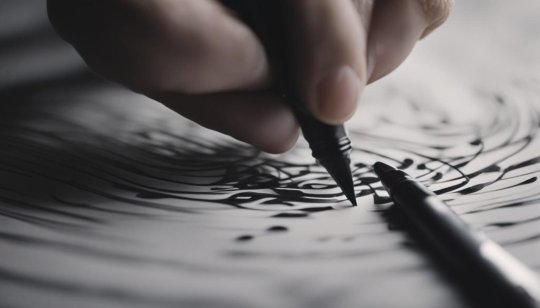
If you're new to calligraphy, starting with basic calligraphy exercises is a great way to build a strong foundation. These exercises focus on fundamental strokes, such as upstrokes and downstrokes, transitioning between thick and thin strokes, and creating oval shapes. By practicing these drills, you can improve your pen control, learn proper letter formation, and develop a consistent writing style. These exercises are designed to help beginners develop the necessary skills and techniques for creating beautiful calligraphy. One of the key calligraphy drills for beginners is practicing upstrokes and downstrokes. This exercise involves applying pressure to create thick downstrokes and releasing pressure for thin upstrokes. By mastering this technique, you can achieve the desired contrast in your letterforms. Another important drill for beginners is transitioning between thick and thin strokes. This exercise helps you understand how to vary the pressure on your writing instrument to create different line weights. It's essential for creating elegant and dynamic letterforms in calligraphy. Basic Calligraphy Exercises for Beginners Description Upstrokes and Downstrokes Practice applying pressure to create thick downstrokes and releasing pressure for thin upstrokes. Transitioning Between Thick and Thin Strokes Learn how to vary the pressure on your writing instrument to create different line weights. Creating Oval Shapes Master the technique of smoothly transitioning from thin to thick strokes to create oval shapes. In addition to these drills, beginners can also practice creating oval shapes. This exercise involves smoothly transitioning from thin to thick strokes to form perfectly rounded shapes. Mastering this technique will help you create beautiful flourishes and decorative elements in your calligraphy. Remember, practice is essential for improving your calligraphy skills. By dedicating regular time to these basic calligraphy exercises, you can develop the necessary foundation to progress to more advanced techniques and styles. So grab your pen, find some practice sheets, and start honing your calligraphy skills today! Resources: - Calligraphy for a Latté: Basic Calligraphy Drills - Cursive Calligraphy for Beginners: An Easy Way to Start
Advanced Calligraphy Exercises for Skill Development
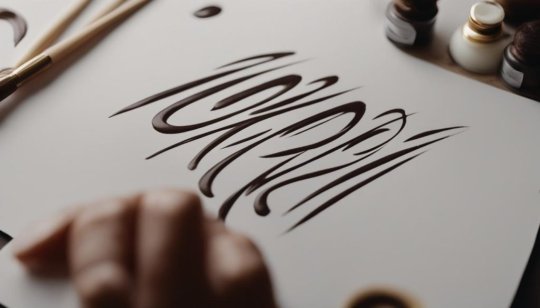
If you're looking to take your calligraphy skills to the next level, it's time to challenge yourself with advanced calligraphy exercises. These exercises are designed to push your skills beyond the basics and allow you to explore more complex techniques and styles. By regularly practicing these advanced exercises, you can further develop your own unique lettering and refine your overall calligraphy technique. One of the key areas to focus on in advanced calligraphy is brush lettering. Brush lettering involves using a brush pen or a paintbrush to create thick and thin strokes, adding depth and dimension to your letterforms. By practicing brush lettering drills, you can improve your control over the brush, experiment with different pressure variations, and create beautiful calligraphic compositions. Another important aspect of advanced calligraphy is mastering various calligraphy drills. These drills focus on specific aspects of calligraphy, such as achieving consistent spacing between letters, creating intricate flourishes, and perfecting complex stroke combinations. By dedicating time to practicing these drills, you can enhance your overall technique, develop your muscle memory, and expand your repertoire of lettering styles. Finally, using practice sheets specifically designed for advanced calligraphy can be immensely helpful. These practice sheets provide guided lines and exercises that challenge you to experiment with different shapes, angles, and lettering styles. They can also serve as a valuable reference as you work on perfecting your technique and developing your own unique calligraphy style. Benefits of Advanced Calligraphy Exercises Examples Enhances brush lettering skills Creating thick and thin strokes, experimenting with pressure variations Refines overall calligraphy technique Mastering spacing, creating intricate flourishes, perfecting stroke combinations Expands repertoire of lettering styles Practicing different shapes, angles, and calligraphy styles "Advanced calligraphy exercises allow you to push the boundaries of your skills and explore new possibilities in lettering. By challenging yourself with more complex techniques and drills, you can greatly enhance your calligraphy skills and create stunning hand-lettered pieces." - Professional Calligraphy Artist Take Your Calligraphy Skills to New Heights If you're ready to take your calligraphy skills to new heights, start incorporating advanced calligraphy exercises into your practice routine. Dedicate regular time to brush lettering, explore different calligraphy drills, and utilize practice sheets specifically designed for advanced techniques. Through consistent practice and experimentation, you can continue to grow and improve as a calligrapher, developing your own unique style and creating breathtaking hand-lettered artworks.
Choosing the Right Calligraphy Practice Sheets

When it comes to improving your calligraphy skills, choosing the right calligraphy practice sheets is crucial. These sheets provide structured exercises that allow you to practice specific techniques and styles, helping you refine your strokes, improve your letterforms, and elevate your overall calligraphy skills. Here are a few factors to consider when selecting the perfect practice sheets: - Size: The size of the practice sheets should be compatible with your writing utensil, whether it's a brush pen, dip pen, or a regular pen. Opt for sheets that offer enough space for you to comfortably practice your strokes and letterforms. - Slant: Consider the calligraphy script you are practicing, such as Copperplate or Spencerian, and choose practice sheets with the appropriate slant. This will help you maintain consistency and accuracy in your letterforms. - Paper Type: Different writing utensils require different types of paper. For brush pens, marker paper is recommended to prevent ink bleeding. On the other hand, dip pens work best with premium 32lb paper, which can handle the ink flow without feathering or smudging. By selecting practice sheets that suit your specific needs, you can ensure a more effective and enjoyable calligraphy practice experience. Sample Calligraphy Practice Sheets Here is a sample of calligraphy practice sheets that you can use to enhance your skills: Sheet Type Focus Recommended for Basic Strokes Mastering fundamental strokes Beginners Alphabet Lettering Improving letterforms and consistency All skill levels Flourishes Practicing intricate embellishments Intermediate to advanced These practice sheets are just a starting point, and there are countless resources available online that offer a wide range of practice materials. Explore different styles, techniques, and scripts to continuously challenge yourself and improve your calligraphy skills.
Free Calligraphy Practice Sheets and Worksheets

Enhance your calligraphy skills with a wide range of free calligraphy practice sheets and worksheets available online. These resources provide valuable practice materials for both beginners and experienced calligraphers, allowing you to improve your hand lettering and lettering techniques. Whether you're interested in traditional calligraphy or modern calligraphy, you can find a variety of free practice sheets that suit your needs and skill level. These practice sheets cover everything from basic strokes and alphabet lettering to more advanced techniques and styles. By regularly using these practice sheets, you can refine your calligraphy strokes, perfect your letterforms, and develop your own unique calligraphy style. Many professional calligraphers and calligraphy enthusiasts generously share their worksheets for free, making it easier for aspiring artists to access high-quality practice materials. So, take advantage of these free resources and start practicing your calligraphy skills today. With consistent practice and dedication, you'll be amazed at how quickly you can improve and create stunning hand-lettered pieces. "Practice makes perfect. Take advantage of the free calligraphy practice sheets and worksheets available online to sharpen your calligraphy skills. These resources provide structured exercises that target specific techniques and styles, allowing you to refine your strokes, improve your letterforms, and enhance your overall calligraphy skills." - Calligraphy Master Benefits of Using Free Calligraphy Practice Sheets Using free calligraphy practice sheets offers several benefits for calligraphy enthusiasts: - Structured Exercises: Practice sheets provide guided lines, stroke sequences, and lettering drills that help you practice specific techniques and styles in a structured manner. - Progress Tracking: By using practice sheets regularly, you can track your progress and see how your skills improve over time. - Diverse Styles: Free practice sheets cover various calligraphy styles, giving you the opportunity to explore different lettering techniques and find your own unique style. - Accessible Resources: With numerous calligraphy practice sheets available online for free, you can easily find and download practice materials that suit your preferences and skill level. Practice Benefits Using structured exercises Improves pen control and letter formation Tracking progress Allows you to see improvement over time Exploring diverse styles Helps you find your unique calligraphy style Accessing free resources Provides easy and cost-effective practice materials
Practicing Calligraphy for Improvement
https://www.youtube.com/watch?v=WnCZKh8E68Q Consistency is key when it comes to improving your calligraphy skills. By dedicating regular time to practice and focusing on targeted exercises, you can enhance your technique and achieve the desired results. Here are some tips to help you get the most out of your calligraphy practice: - Start with basic calligraphy drills: Begin your practice sessions with exercises that focus on fundamental strokes and letterforms. This will help build a strong foundation and improve your pen control. - Gradually progress to more advanced drills: Once you feel comfortable with the basics, challenge yourself with more complex exercises. This could include practicing intricate flourishes, experimenting with different line thicknesses, or working on control with different shapes and angles. - Set specific goals for each practice session: It's important to have a clear objective in mind when practicing. Whether it's mastering a specific letterform or improving your spacing, setting goals will help you stay focused and measure your progress. - Record and compare your progress: Keep a record of your work and regularly compare it to older pieces. This will allow you to see how far you've come and identify areas where you can continue to improve. - Learn from mistakes: Mistakes are a natural part of the learning process. Embrace them as opportunities for growth and use them to refine your technique. Remember, practice is the key to improving your calligraphy skills. Stay dedicated, be patient with yourself, and enjoy the journey of honing your craft. Table: Common Calligraphy Drills Drill Description Upstrokes and Downstrokes Practice creating smooth and consistent upstrokes and downstrokes, focusing on maintaining a consistent angle and pressure. Transitioning between Thick and Thin Strokes Master the art of creating thick and thin strokes by gradually increasing and decreasing the pressure on your pen. Oval Shapes Create perfect oval shapes by practicing your hand movement and maintaining a consistent width throughout the stroke. Flourishes Experiment with different types of flourishes, such as loops, curls, and spirals, to add flair and elegance to your lettering. Regularly incorporating these drills into your practice routine will help you develop muscle memory, improve your technique, and elevate your overall calligraphy skills.
Conclusion
Calligraphy is a beautiful and expressive art form that requires practice and dedication to master. By incorporating calligraphy practice exercises into your routine, using practice sheets and worksheets, and staying consistent with your practice, you can greatly improve your calligraphy skills. Whether you're a beginner or an experienced calligrapher, there are always new techniques and styles to explore and refine. With time and patience, you can develop your own unique calligraphy style and create stunning hand-lettered pieces. So pick up your pen, grab some paper, and start honing your calligraphy skills today! Embrace continuous improvement Remember, learning calligraphy is a journey, and each practice session brings you closer to your goals. Set specific objectives for your practice sessions, whether it's perfecting a certain letterform or refining your flourishes. Regularly compare your earlier works to track your progress over time. Embrace mistakes as learning opportunities and keep pushing yourself to grow. With dedication and a growth mindset, your calligraphy skills will continue to improve. Read the full article
0 notes
Text
The Art of Proofreading Your Personal Statements

Writing personal statements can be a daunting task, but fear not! With a sprinkle of creativity and a dash of burstiness, you can turn your personal statement into a masterpiece. In this guide, we'll explore the importance of proofreading and how it can elevate your writing to new heights. Let a proofreader or editor tweak your words to perfection now!
Why Proofread?
Before we dive into the creative realm, let's address the elephant in the room: proofreading. It's the unsung hero of great writing. A well-proofread personal statement not only showcases your ideas effectively but also reflects your attention to detail. Imagine it as the final polish on a gem, bringing out its true brilliance. The Power of Creativity

Now, let's inject some creativity into your writing. Personal statements are your canvas, and words are your colors. Paint a vivid picture of your experiences, passions, and aspirations. Make the admissions committee feel your story, not just read it."Creativity is intelligence having fun." - Albert EinsteinDon't be afraid to step outside the conventional boundaries. Use metaphors, anecdotes, and descriptive language to captivate your reader's imagination. Show, don't just tell, how your journey has shaped you. Read More… Read the full article
#AdmissionsProcess#ApplicationEssays#ApplicationSuccess#AttentiontoDetail#ClarityinWriting#CraftingPersonalNarratives#Editing#GrammarCheck#LanguagePrecision#PersonalStatement#PolishingYourWriting#Proofreading#ProofreadingTechniques#RevisionStrategies#Self-Editing#StatementofPurpose#WritingGuidance#WritingImprovement#WritingSkills#WritingTips
0 notes
Text

Writer Skills
January 5, 2024|Blogging
Like anything, you can improve your skills with practice. Learning different subjects, and studying them. So let's list a few that have to do with writing. Creative writing communication and media, English language or literature, creative and professional writing, and journalism. These are just a few subjects you can add to your learning curve to improve your writing skills. So let's get to it, and remember, "Enjoy the Write!" KSCarson
#blog#blogging#blogger#blogginglife#bloggingcommunity#writer#writing#books#nottomissnovels#authorksc#kscauthor#Souza_Author#story#reading#website#online#onlinepresence#evolve learn#skills#writingimprovements#mustread#amazonbooks#booksworthreading#barnesandnoble#indieauthor#fivestarreview#goodreads#fivestarnovels
0 notes
Photo

AI Doesn’t Replace You, It Enhances You Your research, your voice—AI just makes it clearer and sharper. Try ProofreaderPro.ai! 🤖📄 #AIForAcademia #AcademicWritingTips #WritingImprovement #MachineLearning #GradSchool #ProofreaderProAI
0 notes
Text
Writing prompts;
breaking the "enemy" zone in enemies to lovers.
"I may be drunk, but you're not so horrible tonight. Don't laugh, I'm very drunk."
"You're the only one I could come to with this. Now I know you're probably not gonna help me, but..."
"Of course you always have to assume stuff like that. I didn't hate you, I only hated what your people did to my family."
"No! You don't die for me. You don't get to do that, because we hate eachother and it's not appropriate so stop trying to be a hero."
*shoots someone dead to save them, because they need them to be alive during their mission*
Person A tends to B's wounds, because A can't stand seeing people hurting. B looks up at them and considers the possibility of having misjudged their personality.
They're at the end of a mission and are feeling very discouraged, knowing things are only going to get worse. Person A starts the conversation with a question: "Are we still enemies?".
It's raining during their argument and person B can't see A's tears, but still feels the urge to follow them after they run inside the house.
They accidentally get into trouble togheter (commit a crime, idk something like this), so now they have to stick togheter to solve it.
"It doesn't matter that I hate your guts. You look hot, wanna dance?"
"I'd have to be blackout drunk to go out with you, but I don't wanna be in this place either, so where are we going?"
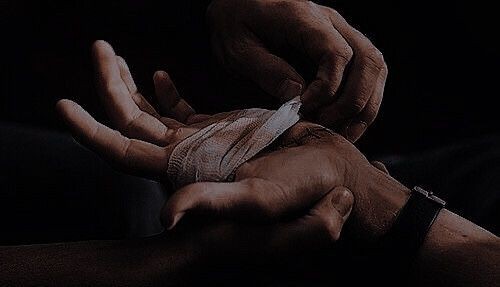
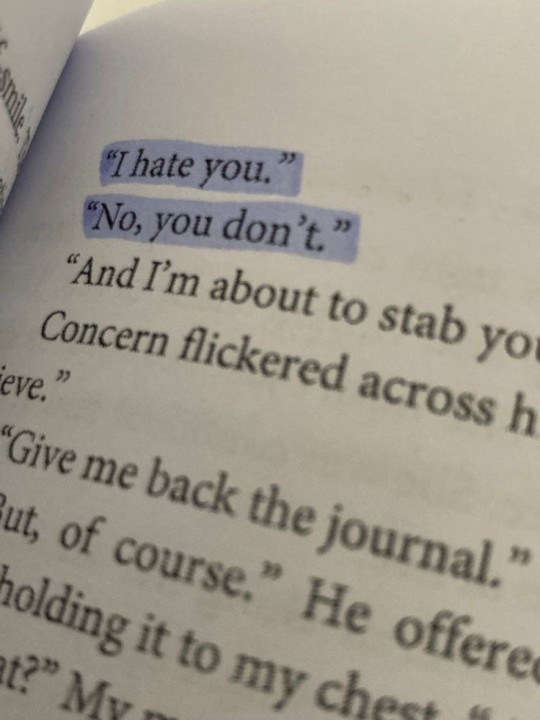
#writingoninstagram#books#reading#writing#book quotes#words typed#bookaddict#bookblr#writingimprovement#writing prompt#enemies to lovers#my prompts#bookworld#writerblr
11 notes
·
View notes
Text
Dealing with Criticism of Your Story: Turning Feedback into Growth
How do you handle criticism of your story? Can negative feedback actually help you grow as a writer? This article will guide you on how to take criticism constructively and use it to hone your craft. Understanding the Nature of Criticism Understanding criticism is the first step towards handling it effectively. What should you keep in mind when you encounter critique? First, remember that…

View On WordPress
#ConstructiveCriticism#Criticism#DealingWithCriticism#Editing#StoryRevision#storytelling#WritersGrowth#writingcommunity#WritingFeedback#WritingImprovement
1 note
·
View note
Text

My newest book, Write a Book That Doesn't Suck is available for pre-order on Amazon!
Paperback releases on October 30th, pre-order here: https://amzn.to/2nydicl
Hardcover will be released on November 30th: pre-order here: https://amzn.to/2nrmorw
0 notes
Text
All in order: Follow up vs. follow-up vs. followup + Improve your writing by dumping fuzzy words
All in order: Follow up vs. run through vs. followup\n remove the Grammar use of these lyric poem wrong, and an editor in chief in chief equally will ware to follow up with the condemnation to better control your authorship next time. \n\nFollow-up with a hyphen can be use in devil ways: \n An adjective centre following an earlier number: The newsperson made a follow-up call to forked check his facts.\n A noun kernel an event that follows an earlier unmatchable: after breaking the intelligence operation floor, the reporter wrote a follow-up for the next issue. \n\nFollow up with no hyphen has a third meaning. Its a verb poseing what one is doing: After covering the fatal accident, the reporter will follow up with a story close to the deceaseds life. \n\n brushup with no space or hyphen sometimes is utilize as a heir for follow-up. Editors and instructors generally eschew this spelling, however.\n\n involve an editor? Having your book, business history or academ ic melodic theme proofread or change originally submitting it can chuck out invaluable. In an economic modality where you hardihood heavy competition, your create verbally necessarily a secondment inwardness to give you the edge. Whether you abide by from a big urban center analogous Tampa, Florida, or a small town equal Deadhorse, Alaska, I can allow for that second eye. \n\n+\n\nImprove your write by dumping dazed actors line\nTo really slyness of Writingimprove your writing, your language should be truly specific and read peradventure something uniform what youd materialise in a story thats non so loosely written.\n\nHuh? \n\nThe problem with the to a higher place advice is its riddled with groggy terminology or words that arent precise: really, very, maybe, something like, no so loosely. Such words weaken your writing by giving an inexact, out-of-focus picture of the adorn or idea that youre portraying. Other fuzzy words include almost, half- , very , really, seem, looked like, and felt. \n\nTheyre in like manner known as weasel words, because as a generator, you have a responsibility to be precise. By using fuzzy words, though, the writer fails to do the hard cook of writing and instead behaves like an optometrist who does a miry job and hands a customer a bitstock of glasses in which the prescription(prenominal) is slightly off. \n\nThe opening reprove would be improved if rewritten as: To improve your writing, your words should be specific, like those in a tightly-constructed story.\n\nAs with any rule, at that places an exception, of course. Fuzzy words might be used in dialogue to show that a character has an inexact sense of what occurred (I plainly got a glimpse it looked to be almost eight feet tall.) or when that character is being shoddy (He suppressed a grimace. Its very good, he said, not looking up.).\n\nNeed an editor? Having your book, business document or academic paper proofread or edited before subm itting it can prove invaluable. In an economic climate where you face heavy competition, your writing needs a second eye to give you the edge. Whether you come from a big city like Syracuse, New York, or a small town like Hicks, Alabama, I can return that second eye.
0 notes
Text

All Posts
How Writing Changes
January 4, 2024|Blogging
That is a large question and can have a wide range of answers, depending on where you want to go. We all are aware of how technology has changed writing. Pen to paper, typewriter to word processor, to more recently, tablets, phones, etc. But what about your own personal writing changes? We hope our writing comes to a maturity and growth that moves us into a different category as a writer. Not all of us are "Born to Write," but fortunately, with consistent practice and determination, we will get there. We may not end up being a "Shakespeare," but hey, there was only one! And after all, we are talking about changes here! So remember to "Enjoy the Write" KSCarson
#blog#blogging#blogger#blogginglife#bloggingcommunity#writer#writing#books#nottomissnovels#authorksc#kscauthor#Souza_Author#story#reading#website#online#onlinepresence#evolve#change#writingimprovements#mustread#amazonbooks#booksworthreading#barnesandnoble#indieauthor#fivestarreview#goodreads#fivestarnovels
1 note
·
View note
Text
Angst scenes;
writing prompts for angst scenes
character A gets stabbed, just as character B is entering the room. B catches A's words: "Wow, this hurts a lot more than I expected.
they are fighting back to back, and A sees that B has been wounded. This gives them the power to finish the fight, then turn to B: "how long have you been injured like this?"
a call at the end of a battle after A and B were separated: "Be honest, am I ever going to see you again?"
two characters hug to say goodbye but the hug doesn't end for several minutes. (bonus points if it starts raining)
A is searching in the ruins of a crashed building for B's body. instead, they find clues and come to the conclusion that B is the one who started the whole invasion, and that means they can't be dead: "That jerk got me worried again."
trying on clothes for a big event, but finding a needle inside one sleeve just a minute to late. it has already punctured your skin, filling you with poison.
A is immune to poison and B is trying their drink, not knowing that someone's trying to kill A.


#books#my prompts#writing#vintage aesthetic#writingimprovement#writing prompt#reading#academia aesthetic#bookblr#writingblr#book quotes
1 note
·
View note
Text
If you don't know what exactly to improve in your writing:
• have someone read your work.
Learn to use constructive criticism in your advantage and accept that you can't be perfect, not yet. The best thing is sending trustful people your manuscript, even if you don't know them. This way it's not your best friend reading, so they don't manage your feelings and tell you exactly what needs to be improved.
• try writing different kinds of scenes.
Maybe what you write is flat, therefore you should try writing something different. Explore genres and styles, fight scenes and death scenes. Learn your own style and develop it in order for it to evolve.
• read. learn words.
This needs no explanation. A useful trick is literally reading a wordy book if you want to be able to write vast description. Reading a book about war if you want to get into the battlefield mood.
• maybe it doesn't need improvement, it just needs a defined plot
If you struggle with actually writing a book, the old "find an idea and explore it" is best. Try outlining a plot and even the chapters, if that works for you. Or maybe you enjoy writing short stories. No way of writing is the wrong way, so find your own path when it comes to this. Stare at a blank page and start putting word on it, no pressure, even if nothing comes of it. Then you can start the second draft and it will all settle into place with the characters and plot twists.
• write what you're best at writing
if you struggle with, let's say, writing casual scenes, when characters aren't doing anything heroic and are just being normal with eachother, you can change it to something you're good at: like fight scenes. Trust me, your readers don't necessarily need a "balanced" book if the fight scenes are amazing.
0 notes